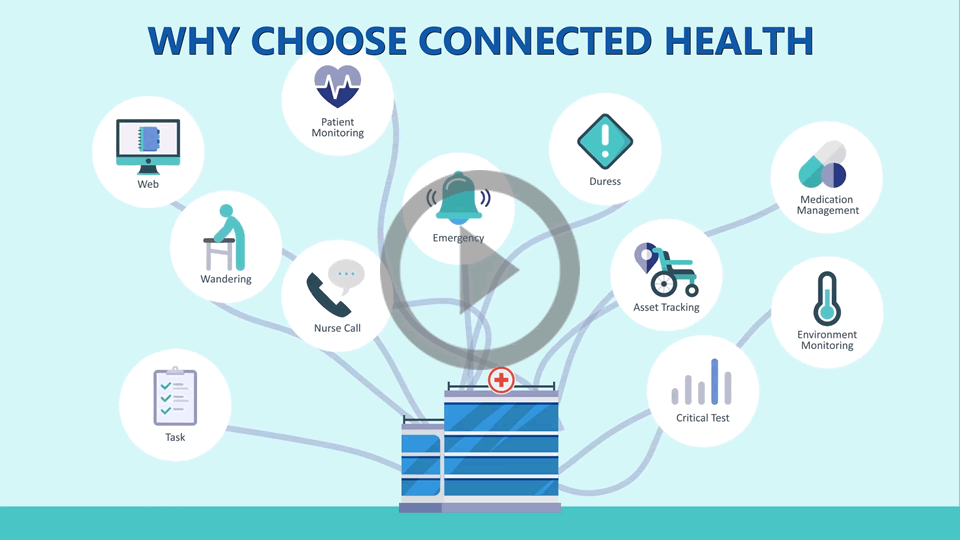In a healthcare setting, speed is always of the essence. Responding to patient requests and alarms is a constant part of every day, with patient outcomes depending on how quickly doctors and nurses can respond. In hospitals using connected health solutions versus legacy, non-integrated, one-way communications methods, this response time can be dramatically improved, leading to better health results and a better patient experience.
A connected health solution is a combination of software and devices that provide contextual information to all members of the healthcare team. Team members can then respond quickly to alarms and requests, and all communications are in writing, which provides an audit trail. This means patients get what they need, sooner.
One of the key areas in which response times can be improved is in alarms such as a code blue. In most healthcare facilities, a team member has to notify the hospital operator to call an alarm. Alarms are communicated using overhead paging, pocket pagers, and annunciators. This one-way communication is simply a call for help, with no additional information and no feedback regarding who is responding and how far away they are.
With a connected health solution, the team member calling the alarm simply presses a single button on the nursecall system. Using a smart device, healthcare professionals can see at a glance what type of alarm has been raised, where the emergency is, how severe it is, and who needs to respond. They can acknowledge that they’re responding to the alarm, having made that decision based on the type and location of the emergency.
If necessary, the platform can escalate the alarm and request additional resources as needed. Team members can see the live status of the alarm and they can also see when the alarm is cleared. The team who called the code can see which team members are responding and where they’re coming from, letting them manage the situation effectively in the meantime.
At the end of the alarm, team members can clear it from the devices, letting other staff members know they can stand down.
The same platform can help minimise the disruption to patients caused by the many bedside medical devices that constantly alarm. Nurses become desensitised to machines like infusion pumps and patient monitors, which can disturb the patient’s rest. Attending to these alarms means nurses must first enter the room to ascertain the problem, communicate with the patient, and then determine the next course of action. Often, this means the nurse must leave the room to collect equipment such as a new IV bag for example, and then return to set it up. This double-handling approach wastes time and creates extra work for nurses.
Using a connected health platform, nurses can prevent alarms from sounding at the patient’s bedside, creating a quiet environment for the patient to rest. Instead, the alarms can be sent directly to the nurse’s smart device. Using the information provided, nurses can determine what’s required and collect equipment before entering the patient’s room. This saves time and effort, while ensuring the patient gets what they need, when they need it.
If the nurse is busy and can’t respond to the alarm, it can be escalated to another caregiver who can respond, which means patients have their needs attended to sooner. Less waiting time can mean patients experience less pain and anxiety, and their recovery can be more successful.
A third area in which a connected health platform can make a difference is in administering medication. If a patient needs pain medication, a nurse must first check with the doctor. This means relying on information written on the patient’s care board, which could be out of date. The nurse must send a one-way page to the doctor and wait for a response, which can take a significant amount of time, depending on what the doctor is doing. Then, the doctor can respond and prescribe medication as appropriate.
Using a connected health platform, this process can be significantly shortened. The nurse can open the communication application and send a message to the on-call physician, which means it’s automatically sent to the doctor that is available. The nurse can request pain medication for the patient and provide any additional details as required. The doctor can then reply with clear instructions that are in writing, making it easy for the nurse to follow them correctly.
This approach means that patients who are in pain receive their medication sooner, while the process of communication between nurses and doctors is streamlined.
These three use cases demonstrate the significant value of a connected health solution. The benefits extend to healthcare professionals and patients alike, delivering better outcomes and a more patient-centric approach.
To find out more about how a connected health solution could benefit your healthcare facility, contact us today.


